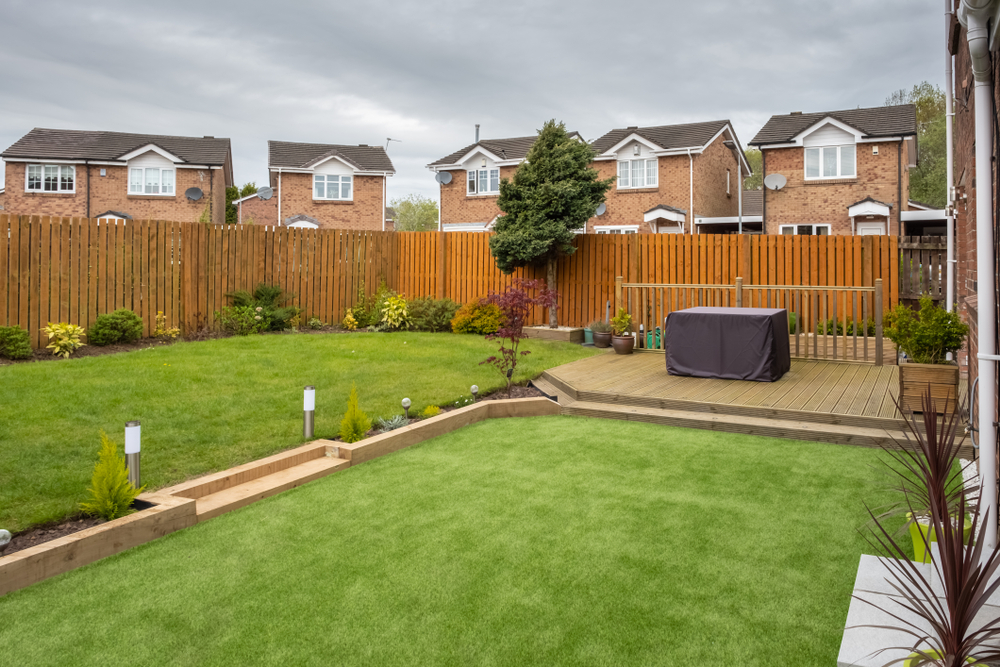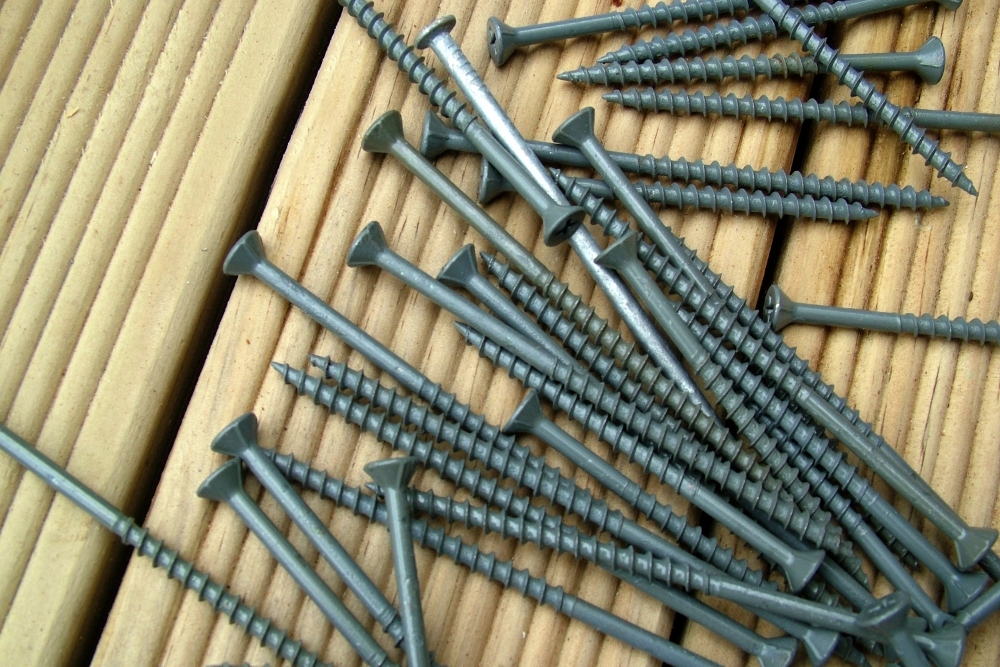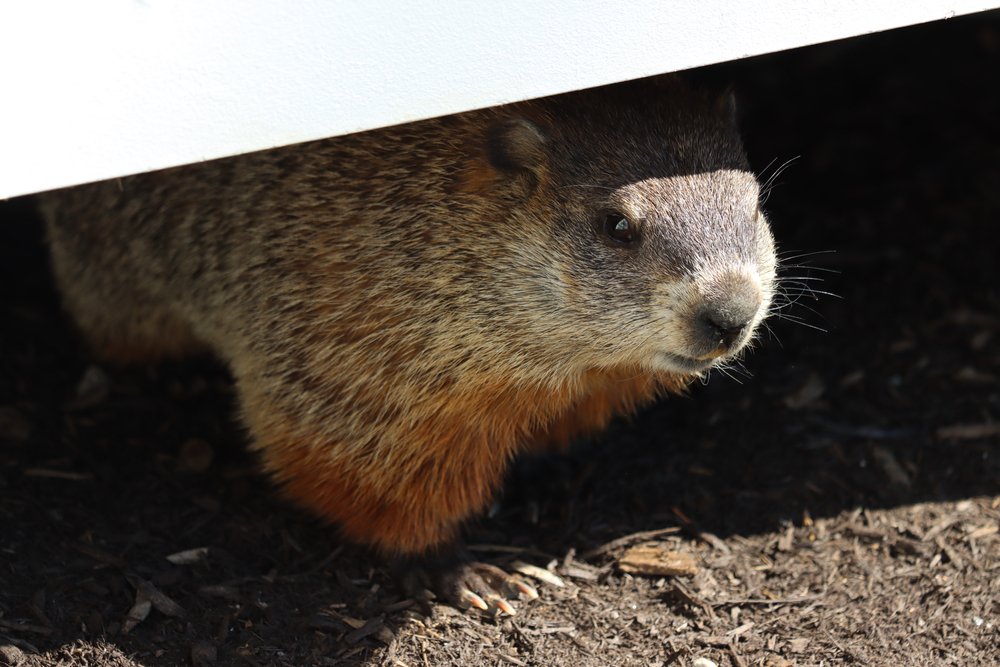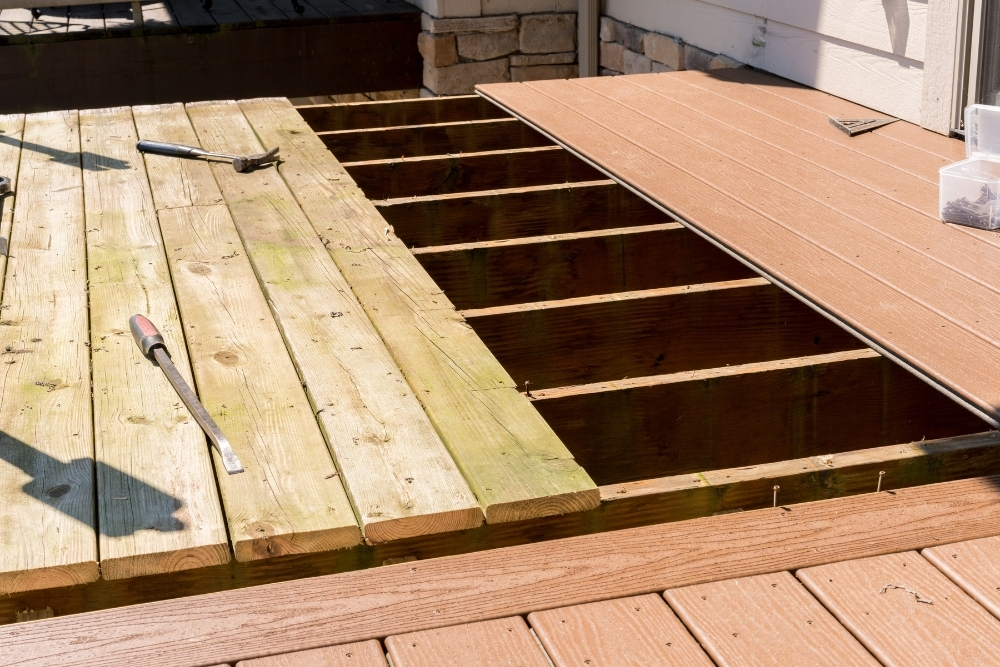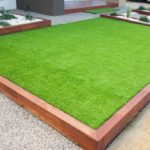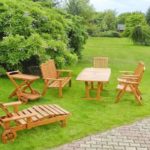Your raised beds will be a part of your garden for several years, so it’s essential to fill them with the right materials. The ideal bottom layer of your raised beds should help with drainage, suppress weeds, improve the soil, prevent rodents and pests from burrowing in, and protect the soil from any potential contaminants.
Putting a few layers of newspaper or cardboard sheets, landscape fabric, or leaves on the bottom of your raised beds is best. Avoid lining the bed with rocks, and use materials that allow proper drainage. It’s also best to replenish the beds every fall for better yields in the spring.
You can put several different materials on the bottom of your raised beds, each with its unique benefits. Let’s look at how you can fill the bottom of your raised garden beds, why you should line them, and how often you should replenish them so you can get your raised garden off to an excellent start.
What Should You Put at the Bottom of a Raised Garden Bed?
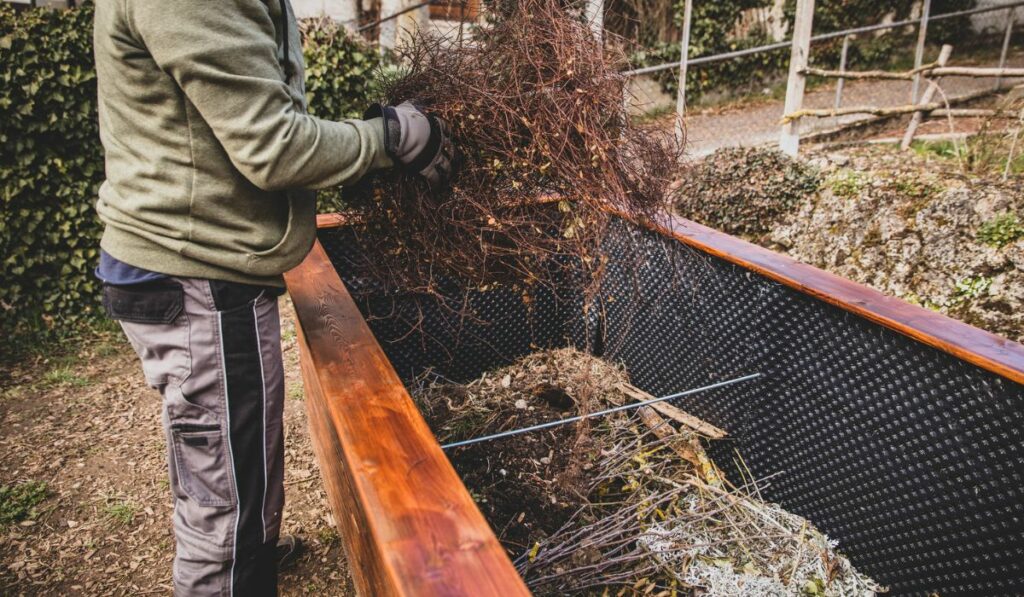
Ideally, you should place a barrier between the ground and the soil in your raised garden beds to prevent weeds from growing and taking over your plants. There are several different materials you can use to build this barrier, including:
Newspaper
Abundant and cheap, newspapers are an excellent option for lining the bottom of your raised beds. You simply need to place a couple of newspaper sheets across the bottom, fill the garden bed with soil, and start planting!
While newspapers resist decomposition, they will break down eventually if given enough time. Although the barrier will be destroyed, it will release a large amount of carbon into the soil.
This carbon will then help feed the microbes living in the soil, resulting in better and healthier soil and plants. Remember that the more newspaper sheets you use to line your raised bed, the longer it will take them to decompose fully.
Also, if you’re worried about the toxins and chemicals in newspaper ink damaging the soil, don’t be! Since newspaper ink is soy-based, it won’t damage the soil or the plants you’re growing.
Cardboard
Cardboard is another excellent material for lining the bottom of your raised beds, especially if you’re on a tight budget. Like newspaper sheets, it’s also incredibly cheap and effortless to find.
Cardboard will decompose over time, but since it’s thicker and tougher than newspaper sheets, it will take much longer. It takes around four to six months for cardboard to decompose fully, but this time frame varies with your type of cardboard.
While you can place almost all kinds of cardboard at the bottom of a raised bed, it’s best to use thicker, multilayered cardboard sheets. Their corrugated, sturdy structure will decompose much more slowly than a flimsy, single-layered sheet of cardboard.
However, ensure you never line your raised beds with cardboard sheets with a glossy print, such as soda boxes, shoe boxes, and cereal boxes. The glossy ink can release toxins and chemicals into the soil as it decomposes, damaging both the soil and the plants.
Landscape Fabric
If you’re okay with spending a bit of money, landscape fabric is the option. It’s incredibly durable and highly resistant to decomposition. In addition, it will last for around ten years before you’ll have to replace it, making it an excellent option in the long run.
Along with placing landscape fabric at the bottom of raised beds, you can also use them to cover the topsoil. Just make sure you cut a few holes to allow your plants to grow through. Placing landscape fabric at the top and bottom will make it practically impossible for weeds to grow and come up.
However, when buying landscape fabric, ensure you don’t confuse it with landscape plastic, as they’re two completely different things. While landscape plastic will also help prevent the growth of weeds, it won’t provide any drainage, as there aren’t any gaps or holes to allow water to pass through, like there are in landscape fabric.
Burlap
Burlap is an excellent alternative if you don’t want to use landscape fabric. It’s not as durable as the fabric, but it will still take several years to decompose.
Thanks to all the gaps between its threads, it allows water to pass through easily, improving the drainage of your raised beds. Since it’s made from jute plant fibers, it’s also incredibly eco-friendly.
However, its edges fray easily, making the burlap look messy and accelerating its decomposition.
Leaves
If you can’t find any of the previously mentioned materials, you can line your raised beds with leaves to prevent weeds from taking over your plants. Unfortunately, it’s effortless to use leaves, but they’ll decompose quickly.
It takes around six to 12 months for leaves to decompose fully, but luckily, they release a lot of organic material into the soil as they do so. You can also slow down their decomposition by adding as many of them as possible to the bottom of your raised bed before you add the soil.
What are the Benefits of Lining Your Raised Garden Beds?
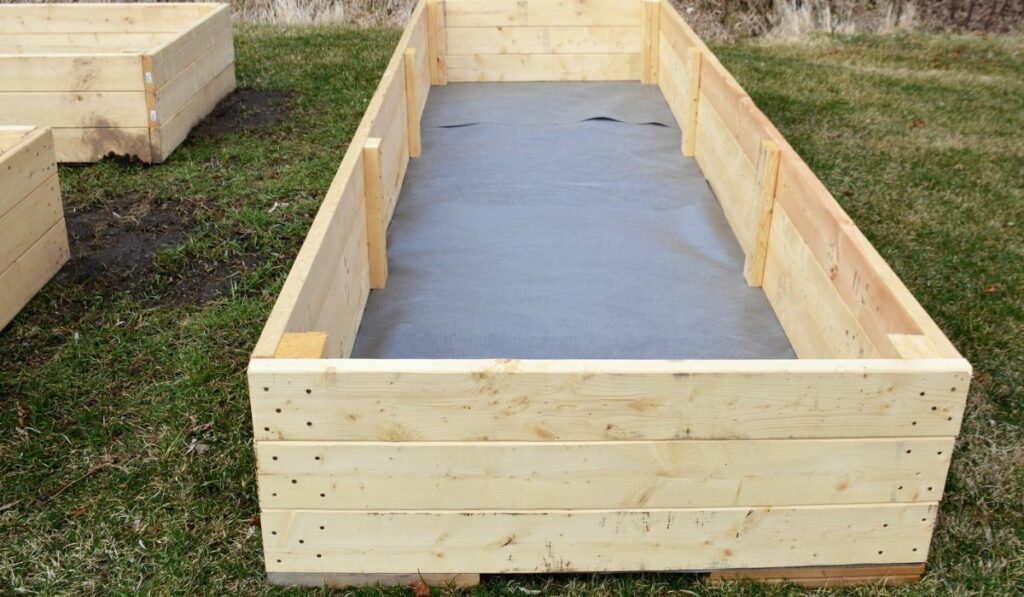
Lining your raised garden beds has several benefits that may be worth all the additional time and effort. Some of these advantages include the following:
Weed Prevention
The biggest benefit of lining your raised beds is the prevention of weed growth. Newspaper and cardboard sheets are especially effective at preventing weeds from thriving and taking over your plants, but almost all other organic mulches work.
By placing a thick barrier between the ground and the soil in your raised beds, you’ll be able to choke out the grass and weeds growing under the beds.
Improved Drainage
The soil in raised garden beds usually dries out more quickly than the surrounding soil. However, lining the bottom can help the soil retain moisture that would otherwise dry or wash away.
Thicker or denser soils under raised beds can also prevent proper drainage. Luckily, a suitable barrier can also keep your soil from becoming waterlogged.
Healthier Soil
As the material lining the bottom of raised beds starts to decompose, it will release a lot of valuable nutrients directly into the soil, ensuring better and healthier plant growth.
Prevents Soil Contamination
Many things can contaminate the surrounding soil and make it unsuitable for growing plants, such as garbage or previous exposure to pesticides and other chemicals.
If you live somewhere with a higher risk of soil contamination, putting a solid barrier between that soil and your raised garden bed soil can help prevent the toxins and chemicals from leaching in.
How Much Material Should You Put in Your Garden Bed?
The answer to this question depends on what you will grow in your garden bed. For example, if you’re planning on planting leafy greens, then you’ll only need around six to eight inches of high-quality soil mix, like this one from Miracle-Gro (on Amazon), on the surface.
You’ll then need to fill the rest of the raised bed with native soil or other organic materials for bulk. On the other hand, if you’re growing carrots, you’ll need at least one and a half feet of quality soil at the top.
Remember that the taller and bigger your raised garden, the more materials you’ll have to fill it with. So, for instance, if you have a raised bed that measures 38-inches long and 22-inches deep, like this one from Zylina (on Amazon), then you’ll have around eight sq. ft. of planting space on its surface.
However, you’ll need to fill the bed with around 18 cubic feet of soil to use this planting space.
How to Fill the Bottom of Your Garden Beds
Since you’ll be putting a high-quality soil mix on the top, whatever’s underneath should be able to drain off any excess moisture. So, ensure you don’t line the bottom of your raised beds with materials like rocks, as this can result in an artificial water table that prevents proper water drainage.
It’s best to use old, dry wood as your bottom layer, as it will decompose under the soil and allow excess water to drain easily.
However, keep in mind that it will take a few years for small logs and old branches to decompose correctly, so it’s best to start with shallow-rooted plants in wood-filled beds instead of deep-root plants.
Other garden waste products, such as dry leaves, lead mold, grass clippings, and trimmings from other plants, also make for a good bottom layer. All these materials will also decompose quickly and build up your soil’s organic content.
How Often Should You Replenish Your Garden Bed?
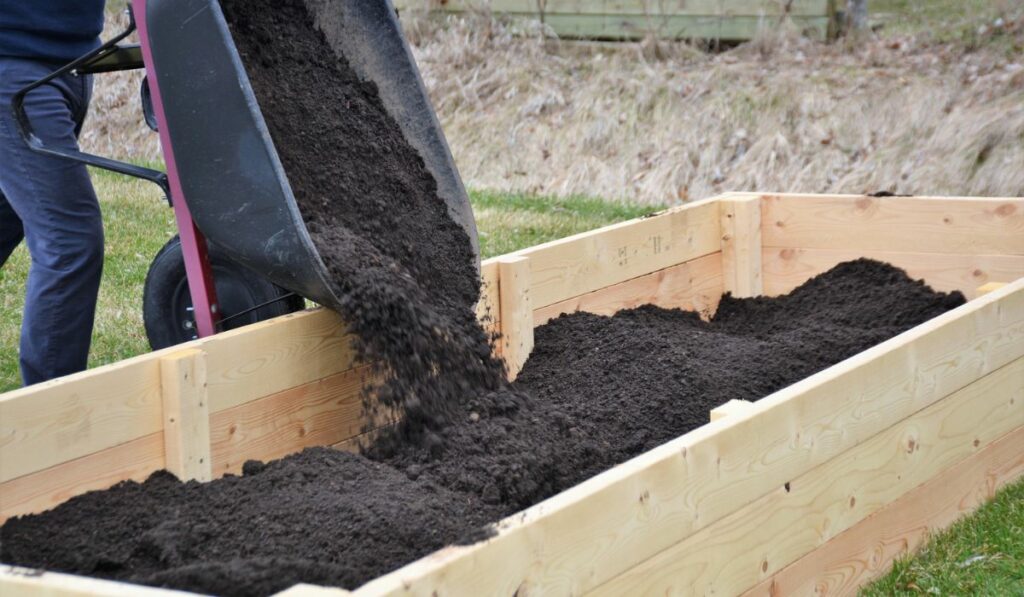
It’s best to replenish your garden bed every fall using a lasagne-layer method. This means you should layer green materials between brown, dried ones.
For example, vegetable scraps, grass clippings, and alfalfa hay are green, while fine wood chips, dry leaves, and dry straw are brown. Spread a layer of brown materials across the bottom, then a layer of green, and then a layer of manure, if you want, to top it all off.
Repeat this same layering until you reach the top of your raised bed. You can also mound it a bit above the surface of the bed. Then, by the time spring rolls around, you’ll have a replenished and perfectly healthy surface to grow your plants.
Once you’ve built up around six to eight inches of layered materials, top it with around three inches of composted manure, and then cover the bed’s surface with landscape fabric, or something similar, to prevent the growth of weeds.
Then, when spring comes around, remove the landscape fabric. There’ll still be a few inches of undecomposed material, usually matted under the manure surface. But don’t worry; use a trowel to make planting holes into the matted layer and plant your seeds down into the hole.
Ensure you don’t get rid of the matted layer, which helps keep the soil moist. By replenishing your raised beds every spring, you’ll be able to improve your plant yields in the spring significantly.

